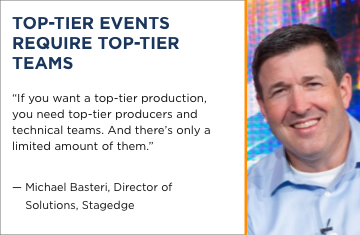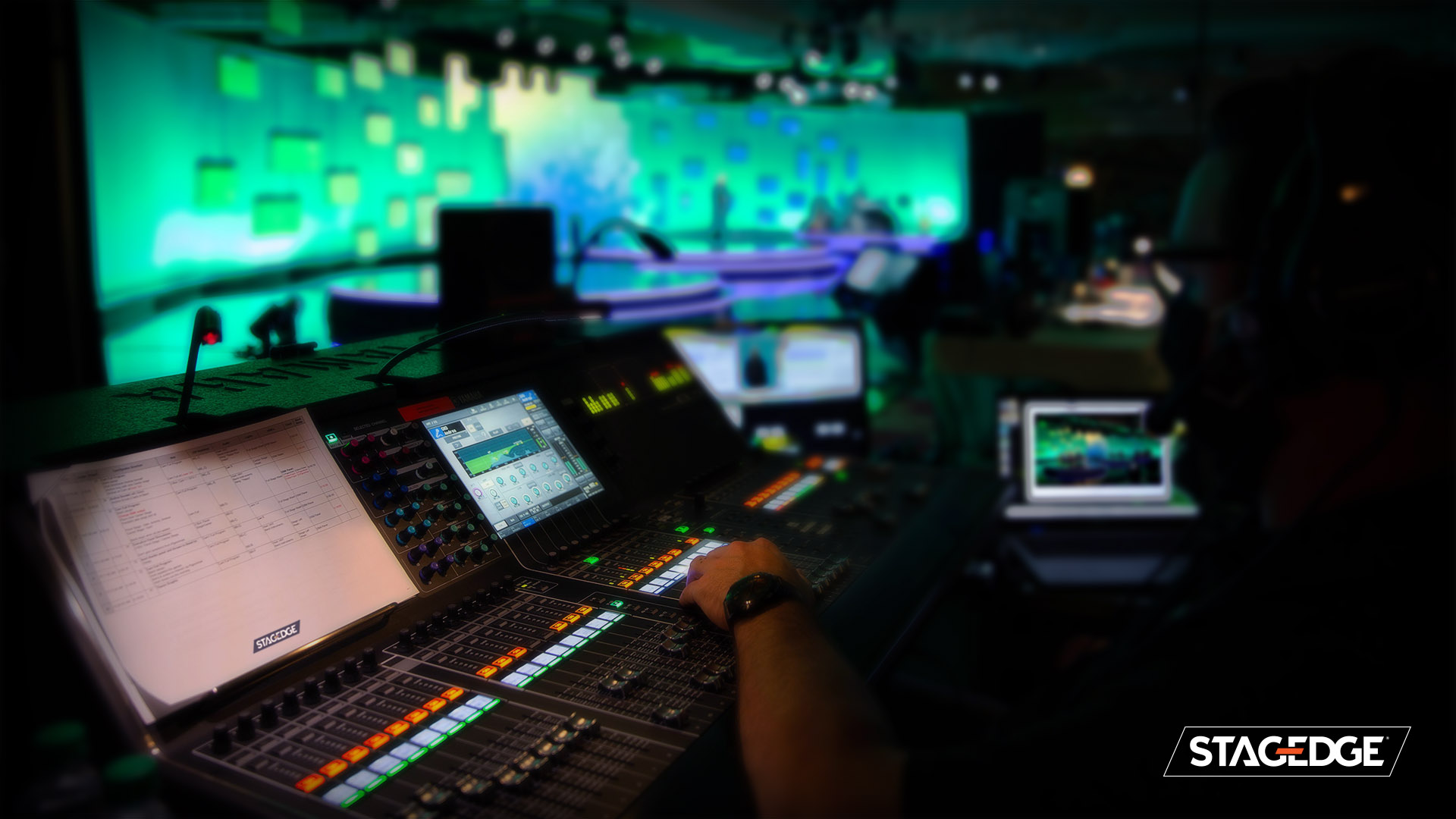For the events industry, the Covid pandemic has been the obvious story of the past two years, grabbing headlines and keeping event planners up at night. But during the same period, an equally important trend has been quietly shaping the industry. Leaps in technology have occurred almost overnight, allowing event planners to explore hybrid modalities and dive deeper into the attendee experience.
In this blog series, we'll look at the future of tech in the events space and what organizations need to know right now to be successful. In part one, we discuss event-enhancing technologies you can start leveraging right now—and how to budget for them. In part two, we'll explore how to use tech strategically and start planning your upcoming event. Let's get started.
The Technology Is Already Here
For many companies, virtual reality and interactive content feel like the distant future, but the truth is: it's already here.
Do you watch sports or tune into the Weather Channel? The television industry has been using innovative tech for years, from hockey pucks with infrared tracking devices so fans can better follow the action, to Immersive Mixed Reality (IMR) weather reports where a reporter is embedded in a virtual flash flood or other weather event. Mark Zuckerberg's Metaverse announcement only accelerated the transition, making augmented reality (AR), virtual reality (VR), and extended reality (XR) the new buzzwords of 2022—and, arguably, the future of event planning.
Audiences are eager to explore different realities and enjoy experiences, incorporating technologies from all industries. During the pandemic, for example, virtual tourism took off as people were stuck at home but wanted to explore museums in other countries for educational and recreational purposes. More recently, fashion mogul Hugo Boss used virtual reality in March 2022 in the inaugural Metaverse Fashion Week show. Virtual reality is even being used in the healthcare industry, allowing medical students to practice surgeries before operating on people.
There is plenty of room for growth in the metaverse, for any company looking to engage audiences across various mediums, but new technology requires many moving pieces. For instance, attendees may need headsets, need to create avatars, and use other tech to participate.
Do you mail at-home participants VR headsets and also put them under seats for those attending in-person? While such an idea might sound outlandish, the tech is becoming lighter and cheaper every day, making this plan doable. In a few years, providing VR headsets at conferences could be as inexpensive and easy as handing out 3D glasses at movies.
"In a few years, providing VR headsets at conferences could be as inexpensive and easy as handing out 3D glasses at movies."
Designing your hybrid event venues to incorporate augmented and extended reality technologies offers a straightforward way to ease into the world of virtual tech. For example, Samsung recently hosted an event where an executive spoke on an XR stage while augmented reality elements appeared around him, delighting the audience and greatly enhancing his speech. As an added benefit, AR and VR create shared experiences for both in-person attendees and virtual eventgoers, promoting cohesion and full-audience engagement.
To create truly memorable events, companies need to think about the audience of the future: technically savvy, eager to be engaged, and hybrid. Your audience isn't bound by geographics anymore, and they expect more than a slideshow presentation. Today's challenge is figuring out how to engage everyone—both remote and in-person—so that each experience makes the impact they deserve. To do this well, engaging an experienced production partner will be the difference between producing an audience-pleasing event like the Samsung keynote, and an awkward event coming across as a hodgepodge of speeches and unrelated technology add-ons.
"To create truly memorable events, companies need to think about the audience of the future: technically savvy, eager to be engaged, hybrid."
Greater Scale Leads to Greater Reach
What used to be a singular event is now two or even three events merged into one seamless production—and planning multiple, simultaneous events to go off without a hitch for all audiences is no easy feat.
There is a lot to plan and budget for: site surveys, venue negotiations, technology, talent and content decisions, and expert teams. All of this is costly—but the ROI is worth it.
The investment in a more substantial and robust event will both ensure return attendees, and bring in new faces. Creating these meaningful ways to connect with audiences is critical, as consumers become increasingly concerned about privacy issues, leading tech giants like Google to phase out more traditional ways of tracking consumer behavior.

The Right Team
Hiring a top production partner is the key to producing a successful event, especially as audiences expect more versatile ways to participate, and more accessibility to the latest industry technologies. You need someone who knows how to execute your vision, take care of all the details, and answer the questions you may not even know to ask.
Stagedge will take your event to the next level and create an unforgettable and seamless experience for your in-person, at-home, and hybrid audiences—making your dream a reality.
Stay tuned for part two, where we discuss effective planning strategies and the best ways to integrate innovative technologies in your upcoming event.
